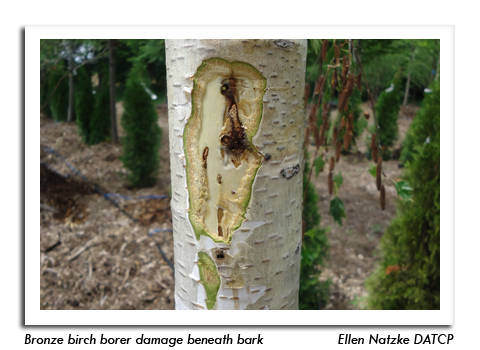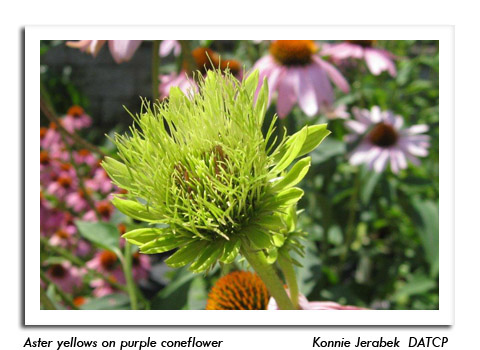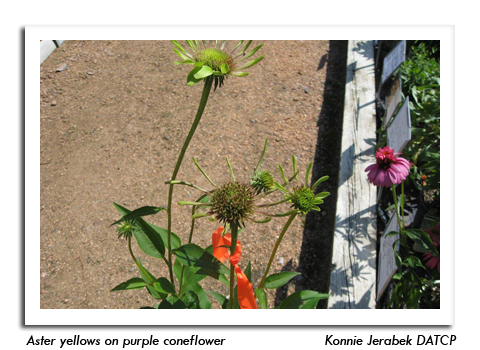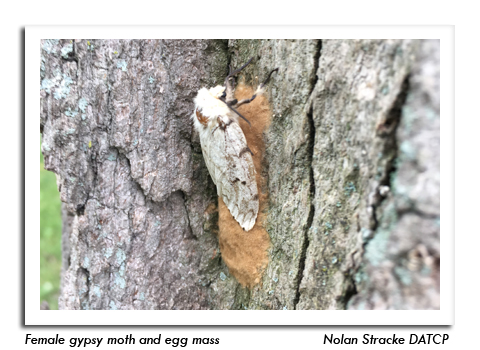
 |
|
|
Nursery & Forest
Volume 61 Number 12 Date 07/21/2016 BRONZE BIRCH BORER - Signs of this wood-boring beetle were observed on the trunks of 'Renaissance' birch trees in St. Croix County last week. Adult bronze birch borers infest trees weakened or stressed due to drought, disease, sun exposure or nutrient deficiency. Larval feeding beneath the bark results in the girdling of branches and stems. Infested trees also develop swellings or bumps on the trunk around the feeding tunnels. Immediate removal and destruction of infested birch is recommended since this insect kills its host within just a few years. ANTHRACNOSE - Nursery inspectors report that oak and Korean maple trees at nurseries in Eau Claire and St. Croix counties are exhibiting foliage with brown, necrotic spots and premature leaf loss due to this fungal disease. Anthracnose rarely causes permanent damage to trees unless severe symptoms persist for several consecutive years. Pruning branches to open the canopy and promote air flow, as well as raking fallen leaves, may reduce its incidence next season. ASTER YELLOWS - This aster leafhopper-transmitted disease was found on Echinacea 'Pink Double Delight' at a nursery in Saint Croix Count last week. Symptoms of infection include abnormal flowers, irregular stem growth, and green, stunted ray and disk petals. The aster yellows phytoplasma persists in both wild and cultivated coneflowers and other perennial or biennial hosts over the winter months, thus infected plants may act as reservoirs next spring. Removal and destruction of symptomatic plants is the recommended control method. -- Ellen Natzke, DATCP Nursery Inspector EMERALD ASH BORER - Beetle emergence has peaked across much of the state with the accumulation of 1,000 degree days (modified base50°F), except in the far northern counties. Monitoring of the nearly 800 EAB traps set in Wisconsin's non-quarantined counties is beginning now that most of the adult population has emerged. No first detections in previously uninfested counties or changes to the EAB quarantine have occurred since EAB was last found in Juneau County on June 15. However, adult beetles continue to be reported from known infested areas of the state, including several locations in Waukesha County on July 13 and 15, and in Dodge County on July 10. New EAB infestations were also found in the towns of Jackson and Rome in Adams County during the last two weeks, although Adams County is already quarantined for EAB. Current information on EAB detection can be found at emeraldashborer.wi.gov by selecting "Where has EAB been found". -- Renee Pinski, DATCP Forest Entomologist GYPSY MOTH - Aerial treatments ended for the season on July 18. The Slow-the-Spread Program treated 221,158 acres in 19 western Wisconsin counties and the DNR Suppression Program treated 102 acres in two counties. Spraying began on May 12. Trap setting was completed on July 20th, with 11,353 gypsy moth traps set across the state. Moths and egg masses have been reported in the southern part of the state. Homeowners in high gypsy moth population areas can begin inspecting trees on their property for egg masses at this time. Removal of egg masses within reach is encouraged. -- Nolan Stracke, Public Information Officer 




|
|
|